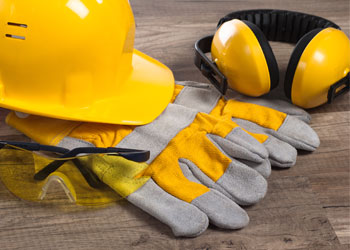Guide du Code, Partie 1 – 9

8 janvier 2016
Souvent, les utilisateurs du Code se retrouvent dans des situations où certains règlements peuvent leur sembler étranges. Ces situations se présentent autant chez les concepteurs, les consultants, les installateurs, les inspecteurs, les étudiants, les formateurs que chez les experts qui développent les normes, et sont souvent liées au fait que le règlement a été mal identifié ou mal interprété. Il n’est peut-être pas celui requis par la tâche à effectuer. Le Code est un document complet et détaillé et la réponse ne se trouve pas toujours facilement. Voici un guide qui au cours des prochains mois vous aidera à trouver votre chemin dans le Code. Cette semaine, la Section 14 – Dispositifs de protection
The CE Code is a comprehensive document. Sometimes it can seem quite daunting to quickly find the information you need. This series of articles provides a guide to help users find their way through this critical document. This is not intended to replace the notes in Appendix B or the explanations of individual requirements contained in the CEC Handbook, but will hopefully provide some help in navigating the code.
Section 16: although a general section of the code, the scope applies specifically to remote control, signal circuits and voltage or energy limited circuits installed in accordance with the requirements of the code, unless amended or modified by other sections. Excluded from Section 16 are communications circuits (included in Section 60) and circuits internally integral to an otherwise approved device. The premise of these requirements is that voltages less than 30 volts do not constitute a shock hazard and power levels less than 100 volt/amps do not constitute a fire hazard.
Section 16 is divided into three main parts covering General requirements, Class 1 Circuits and Class 2 Circuits.
The General requirements part outlines that this section applies to
• Class 1 and Class 2 remote control circuits
• Class 1 and Class 2 signal circuits
• Class 1 extra-low-voltage power circuits
• Class 2 low-energy power circuits
Rules 16-002, 16-004 and 16-006 outline that this section covers the wiring between the load side of the overcurrent device or the power-limited supply and all connected equipment, the classification of circuits into Class 1 or Class 2 circuits and the definition of Class 1 extra-low voltage power circuits (limited to 30 volts) and Class 2 low-energy power circuits (current limited per 16-200).
Rule 16-008 notes that Class 1 or Class 2 circuits installed in hazardous locations are also subject to the rules of Section 18.
Rule 16-010 specifies that remote control circuits to safety control devices where failure could cause a fire or a life hazard are to be considered and installed as Class 1 circuits.
Rule 16-012 deals with circuits in communication cables. It specifies that a Class I circuit cannot be run in the same cable as communication circuits, and Class 2 control and signal circuits that can be are deemed communication circuits and conform to Section 60.
Class 1 circuits
This part outlines the requirements for installation of Class 1 circuits.
Rule 16-100 describes the limitations of a Class 1 circuit:
• for an extra-low-voltage power circuit must be supplied by a source limited to a rated output of 30 volts and 1000 volt/amps
• for a remote control or signal circuit limited to a source not exceeding 600 volts
Rule 16-102 specifies that Class 1 circuits are to be installed as per other sections of the Code except as provided by rules 16-104 to 16-118.
Rule 16-104 designates that the overcurrent protection of Class 1 circuits be in accordance with Section 14 or other specific sections of the Code with the following exceptions:
• where No 18 or 16 AWG copper conductors extend beyond the equipment enclosure they must be protected by overcurrent devices rated at 5 for 10 amps respectively
• to exempt overcurrent protection on the primary side of a secondary-side-protected enclosed transformer other than the normal overcurrent protection for the branch circuit
Rule 16-106 requires that the overcurrent device for Class 1 conductors be located where the conductor receives its supply and may be integral to the power supply.
Rule 16-108 limits the maximum power output of Class 1 extra-low-voltage power circuit sources, including transformers.
Rule 16-110 specifies conductor material and sizes for various installations of Class 1 circuits.
Rule 16-112 indicates selecting conductor insulation types for Class 1 circuits from
• Table 19 for conductors larger than No. 19 AWG
• Table 11 for conductors No. 16 and 18 AWG for Class 1 circuits
Rule 16-114 permits conductors of different Class 1 circuits, which are insulated to the maximum voltage of any of the conductors, to be installed in the same enclosure raceway or cable. Power supply conductors are not permitted to be in the same enclosure, raceway or enclosure of Class I circuit conductors except when connected to the same equipment and all conductors are insulated for the maximum voltage of any conductor.
Rule 16-116 requires mechanical, moisture, excessive heat or corrosive action protection for a remote control circuit where damage would result in a fire or life hazard as per rule 16-010.
Rule 16-118 reiterates that Class 1 circuits extending aerially beyond a building shall comply with rules 12-300 to 12-318.
Class 2 Circuits
This part outlinesthe requirements for installation of Class 2 circuits.
Rule 16-200 describes the limitations of a Class 2 circuit in order to prevent a shock or fire hazard under normal circumstances by
• limiting the current of Class 2 circuits by various methods depending on the voltage
• energy limiting through use of suitable rated series resistors or similar devices
• preventing a Class 2 power supply to be connected in series or parallel with another Class 2 power source
Rule 16-202 accords that conductors and equipment on the supply side of overcurrent protection, transformers or current-limiting devices of a Class 2 power supply shall comply with the appropriate other sections of the code.
Rule 16-204 states that the Class and rating of a Class 2 power supply shall be readily visible after installation.
Rule 16-206 permits overcurrent protection to be an integral part of a Class 2 power supply but prohibits interchangeable type overcurrent devices with different ratings being used.
Rule 16-208 requires the overcurrent device to be located where the Class 2 conductor receives its supply.
Rule 16-210 provides specifications for
• selection of conductors in accordance with rule 4-008 (Table 19) with some exceptions
• use of ELC conductors with limitations as noted
• size of conductors for various installation conditions
• maximum allowable current
Rule 16-212 requires the separation of Class 2 conductors from various other circuits like electric power, Class 1,and electric lighting through appropriate minimum separations or barriers of raceway, cable or other metal or non-metal material. This also applies to a compartment, outlet box, junction box, or similar fitting with the conductors of electric lighting, power, or Class 1 circuits unless where the power circuit conductors are supplying power for the Class 2 power supply and all conductors are insulated for the maximum voltage of any conductor in the enclosure.
Rule 16-214 permits more than one Class 2 circuits within the same cable, enclosure or raceway providing they are insulated for the maximum voltage of any conductor.
Rule 16-216 requires that any Class 2 conductors penetrating through a fire separation be installed in accordance with Rule 2-128.
Rule 16-218 and 16-220 covers conductors in vertical shafts or hoistways in accordance with rules 2-128 and 2-130 or ducts and plenum chambers in accordance with rules 2-130 and 12-010.
Rule 16-222 requires that all lighting products, electromedical equipment, equipment for hazardous locations, and thermostats incorporating heat anticipators shall be approved. However, it allows that equipment located on the load side of overcurrent devices, transformers or current-limiting devices for Class 2 circuits operating at not more than 42.4 volts peak or DC be only acceptable for the application and not necessarily approved. For circuits operating at more than 42.4 volts peak or dc the equipment must be arranged so that no live parts are accessible to unauthorized persons.
Rule 16-224 requires that Class 2 circuits extending beyond a building and run in such a manner as to be subject to accidental contact with lighting or power conductors operating at a voltage exceeding 300 V between conductors shall also meet the requirements of Section 60.
Rule 16-226 specifies conditions to be observed when installing Class 2 circuits underground.
In the next installment: Section 18 — Hazardous locations.
Pour lire les articles précédents de la série:
– Guide du Code, Partie 1 – 10
William (Bill) Burr est l’ancien président du Canadian Advisory Council on Electrical Safety (CACES), et l’ancien directeur de l’Electrical and Elevator Safety pour la province de la Colombie-Britannique. Il a aussi été directeur de l’Electrical and Gas Standards Development et directeur du Conformity Assessment pour le Groupe CSA. Bill peut être rejoint à Burr and Associates Consulting au billburr@gmail.com.










